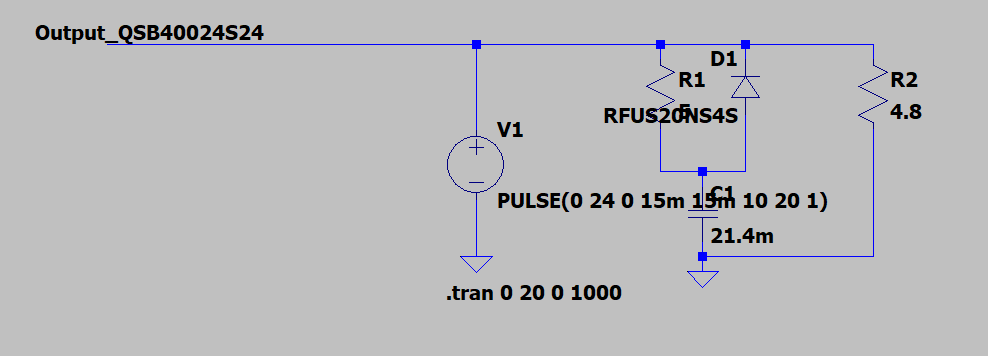I am working on a soft-start for a capacitive load. I using module QSB40024S24 to create 24V output. At first, I allowed the output of the module to connect directly to a capacitor array (21.4mF in total) in parallel with the load. So you can imagine the inrush current is quite high and it causes a large drop voltage at Vin. So the module ran into the UV protection so that the output capacitor array could not be fully charged. After many tries fail,(ex: soft start with driving Vgs of mosfet or work with NTC mostly fail with my short-circuit test) I found this way:

It worked well and ensure that the capacitor would be in full charge. If the load suddenly consumed more current the capacitor will discharge through the Schottky diode. It worked well even with a short circuit test. The only problem I see is you have to choose the power resistor to endure the high current at the initial time when V_cap=0. Does this design still remain any problem that I can not see for a soft-start circuit? Any idea would be very appreciated!!
